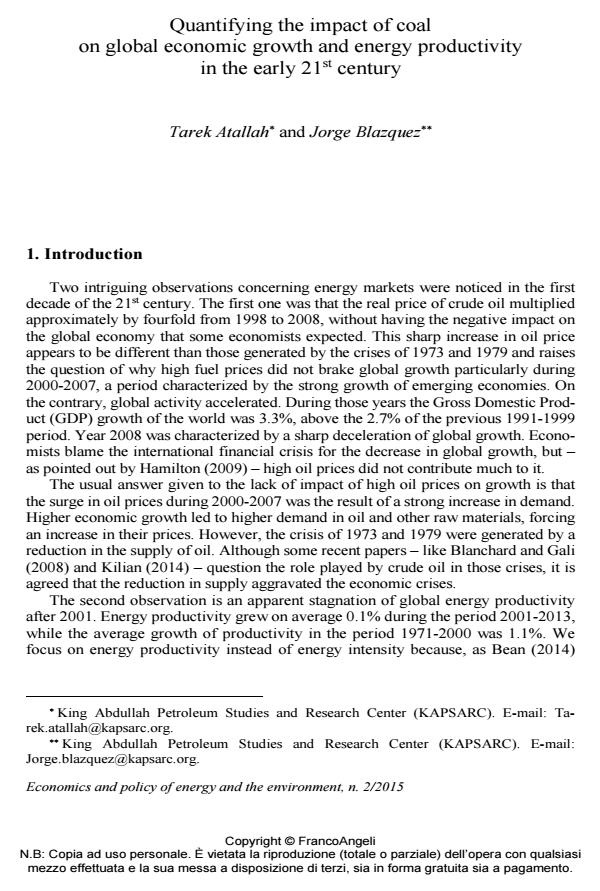Quantifying the impact of coal on global economic growth and energy productivity in the early 21st century
Journal title ECONOMICS AND POLICY OF ENERGY AND THE ENVIRONMENT
Author/s Tarek Atallah, Jorge Blazquez
Publishing Year 2016 Issue 2015/2
Language English Pages 14 P. 93-106 File size 223 KB
DOI 10.3280/EFE2015-002007
DOI is like a bar code for intellectual property: to have more infomation
click here
Below, you can see the article first page
If you want to buy this article in PDF format, you can do it, following the instructions to buy download credits

FrancoAngeli is member of Publishers International Linking Association, Inc (PILA), a not-for-profit association which run the CrossRef service enabling links to and from online scholarly content.
Two intriguing circumstances have characterized the behavior of energy markets in the first years of 21st Century: a sharp increase in oil prices without a clear impact on real economic activity and a relative stagnation of energy productivity after 30 years of continuous improvement. This paper uses a standard macroeconomic production function to show that these two circumstances are consistent with sharp global increase in coal production and consumption. Our results suggest that the strong shift in coal production in the period 2000-2007 can explain why the sharp increase in oil prices did not impact negatively global activity and a relative stagnation in energy productivity. In addition, the paper also highlights the shift in the energy mix towards coal and natural gas and alerts that these fuels, and not only crude oil, can be sources of macroeconomic shocks in the future.
Keywords: Coal, oil, natural gas, fossil fuels, energy productivity, economic growth
Jel codes: Q41, Q43, O40
- Comparing Renewable Energy Policies in E.U.15, U.S. and China: A Bayesian DSGE Model Amedeo Argentiero, Tarek Atalla, Simona Bigerna, Silvia Micheli, Paolo Polinori, in The Energy Journal /2017 pp.77
DOI: 10.5547/01956574.38.SI1.aarg
Tarek Atallah, Jorge Blazquez, Quantifying the impact of coal on global economic growth and energy productivity in the early 21st century in "ECONOMICS AND POLICY OF ENERGY AND THE ENVIRONMENT" 2/2015, pp 93-106, DOI: 10.3280/EFE2015-002007